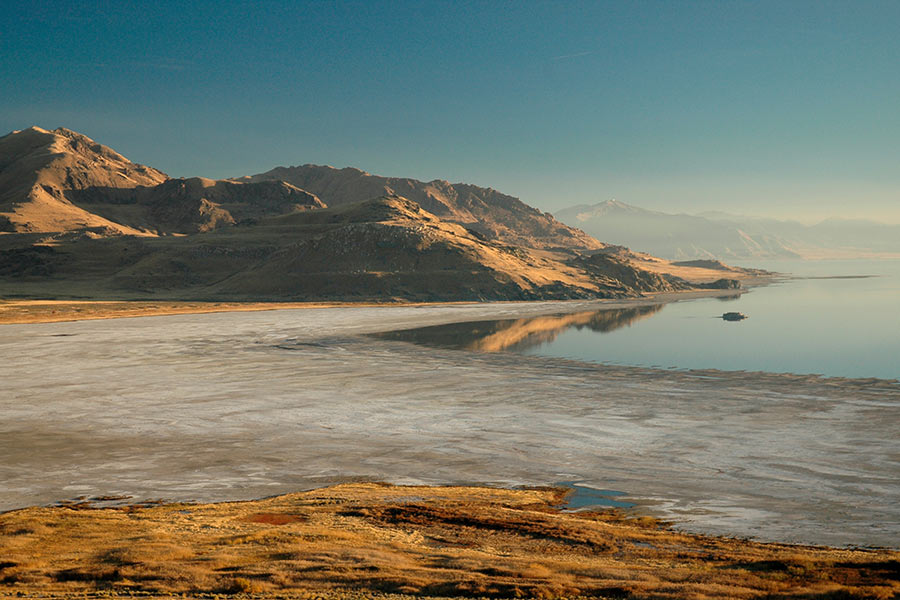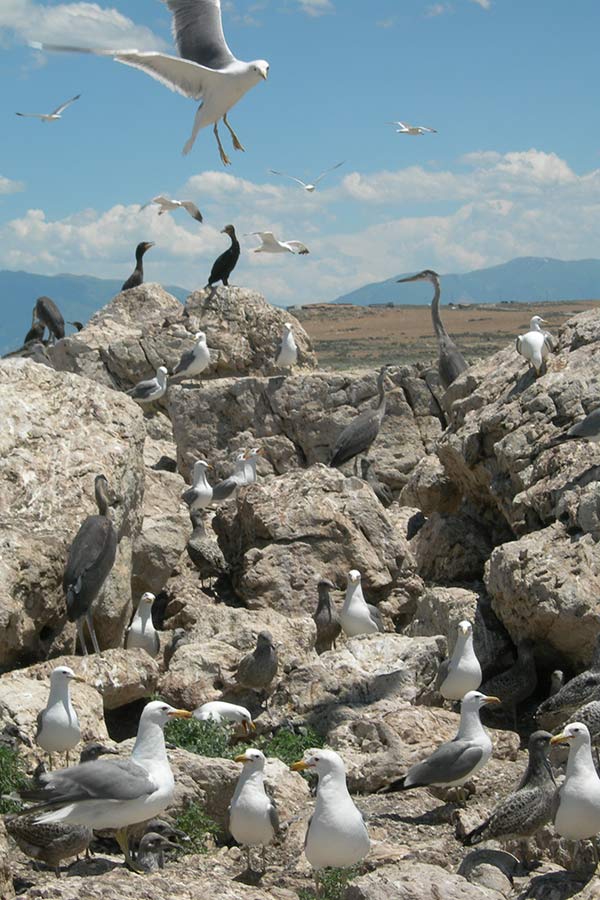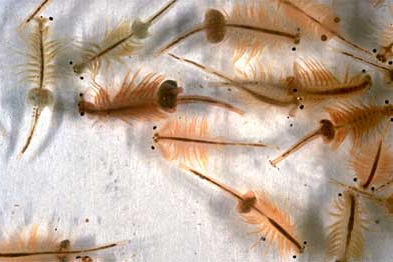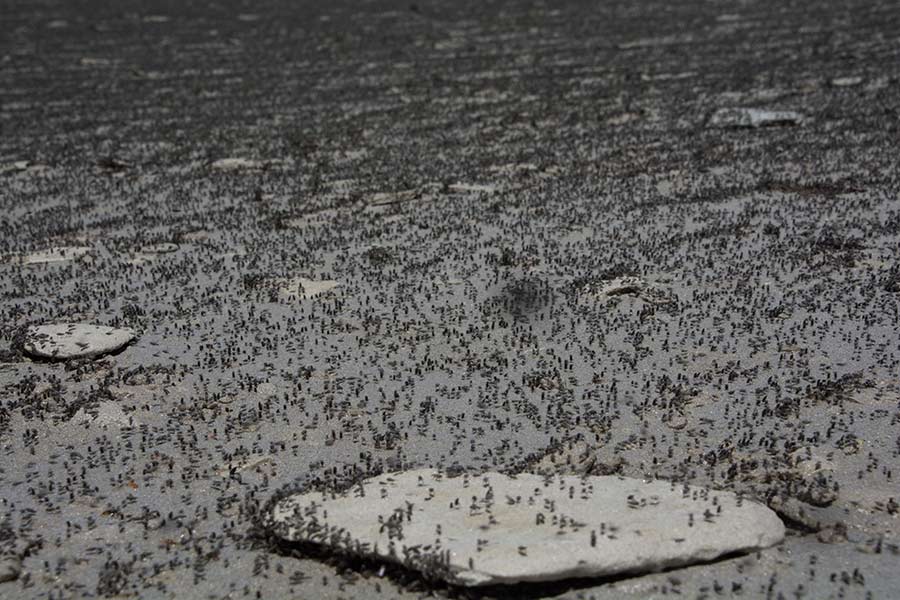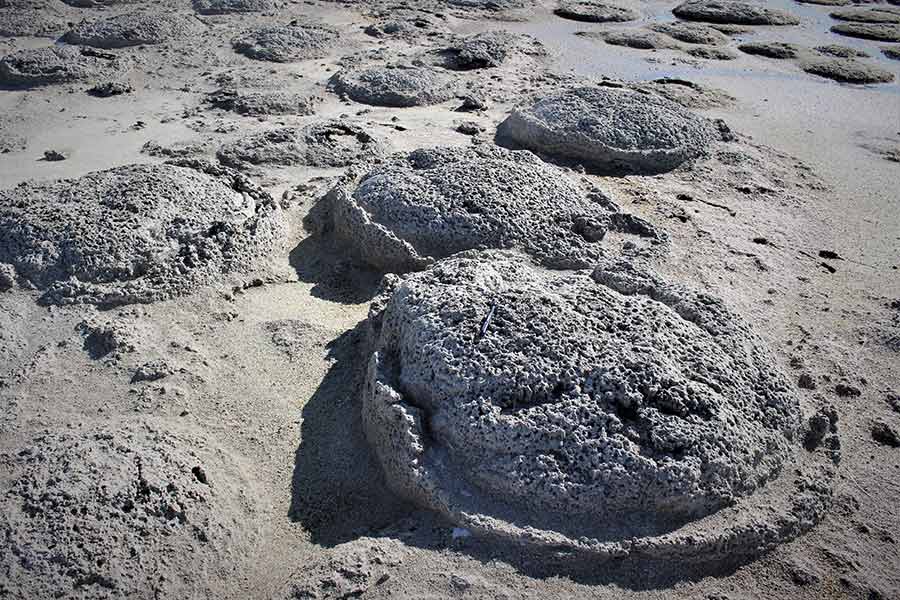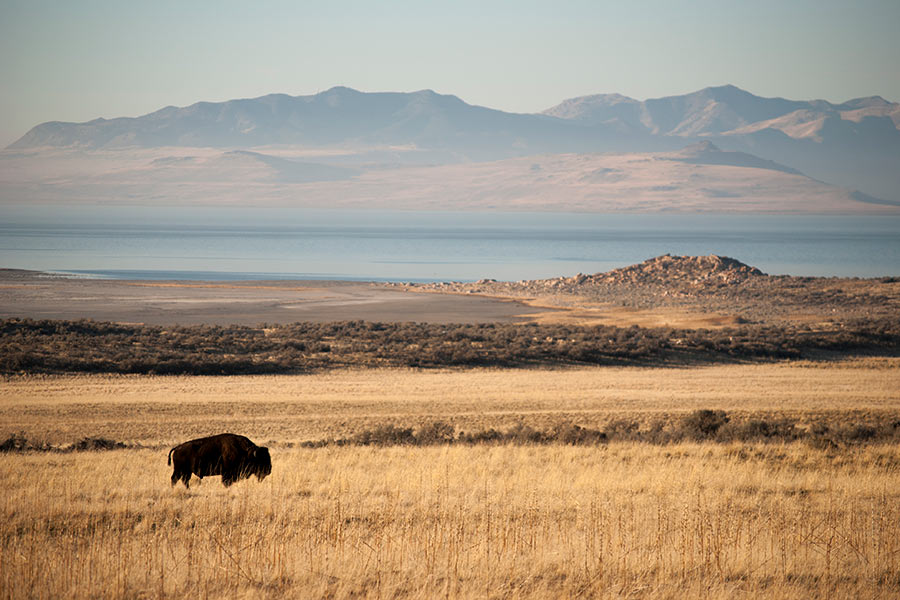≡
Drought and the Great Salt Lake
Frequently asked questions about how drought is impacting Great Salt Lake and the many species that rely upon it
The Great Salt Lake is the largest saline lake in the Western Hemisphere. The lake and its surrounding marshes are home to 75% of all wetlands in Utah. In 1991, the Western Hemisphere Shorebird Reserve Network designated the Great Salt Lake as a site of hemispheric importance to shorebirds, meaning over 500,000 shorebirds a year (or over 30% of a species' biogeographic population) visit the lake.
Roughly 330 species of birds have been documented at the Great Salt Lake and its surrounding wetlands and uplands. This habitat is also important for many other species.
Why is the Great Salt Lake so important for birds?
Birds come to the Great Salt Lake to forage on the abundant food resources the lake provides. Brine shrimp and brine flies are just some of the food sources that these birds — including hundreds of different species — feast on to sustain them during long migrations each year.
Which bird species rely most heavily upon the Great Salt Lake's resources?
The lake qualifies as a hemispheric site of importance for three species of shorebirds: Wilson's phalarope, American avocet and black-necked stilt. This means that these birds rely upon the lake’s resources for survival during their long migrations.
Many other bird species also rely upon the Great Salt Lake:
- The Great Salt Lake is home to the largest breeding colony of American white pelicans west of the continental divide. Pelicans are one of 10 bird species on Utah's species of greatest conservation need list that reside around the lake.
- The largest complex of breeding California gulls resides not in California, but at the Great Salt Lake.
- Twenty-one percent of the North American breeding population of snowy plovers is found around the lake.
- The Great Salt Lake also has the largest inland wintering population of common goldeneyes, and as high as 60% of the North American breeding population of cinnamon teal.
- As many as 60,000 tundra swans have been surveyed at the Great Salt Lake.
- One quarter of all marbled godwits, 15% of the long-billed dowitchers and 10% of the red-necked phalaropes in North American migrate through and stop at Great Salt Lake.
All of these bird species and many more critically rely on the Great Salt Lake for breeding, migration, wintering and shelter while molting.
How does drought impact the lake's surrounding wetlands?
In addition to the lake itself, there are extensive wetlands that provide a rich source of food for migrating birds.
If there is no water in the three major bays — Ogden Bay, Farmington Bay and Bear River Bay — it would mean not having any aquatic invertebrates or aquatic vegetation, food sources that waterfowl, shorebirds and other birds such as pelicans, ibises and herons depend upon. There has been an extreme reduction in foraging habitat for birds over the last decade due to ongoing drought and decreased water levels.
Any disruption in the habitat, water quality, microbialites (layers of organic sedimentary deposits) or phytoplankton (algae) that impact the forage base for these birds would be detrimental to the bird communities that are so heavily reliant on the Great Salt Lake as a food resource during their migrations.
Has there been a decline in bird numbers due to lower water levels at the Great Salt Lake?
There isn't a clear answer on this, due mostly to the size of the lake. DWR biologists do not routinely survey the entire lake now, but did during the five-year waterbird survey from 1997–2001. Currently, some bird species numbers have increased and some have declined, but this does not provide an accurate depiction for all of the different bird species for a few reasons:
- Every other saline lake and migratory stopover in the arid West is declining. Some have dried up completely, which forces birds to go somewhere else.
- The Great Salt Lake is large enough that, despite the decline, there is still habitat available to allow some of the birds displaced in other areas to come here and meet their migratory needs.
- Increases in the number of birds migrating to the Great Salt Lake is not a positive thing for the populations overall, however, as the depleting resources at the lake may not be enough for the increasing number of birds. For example, just a decade ago, biologists would record roughly a million eared grebes at the lake. Now, on average there are about 3.25 million eared grebes at the lake each year because they have no other place to go, all with less food available than before.
- The increased competition for resources creates the potential for catastrophic die-offs, with diseases spreading more easily because of increased population density and poorer health due to declining food supplies.
- There is currently a critical data gap in measuring the carrying capacity for different species of migratory birds at the Great Salt Lake and how lake levels could impact them. With the exception of brine shrimp, biologists currently have a limited understanding of the impacts of low water on other forage bases.
- Anecdotal evidence suggests that there has been a considerable decrease in the numbers of common goldeneye in recent years, and most birds are not staying as long as they should at the Great Salt Lake due to a lack of food sources.
Why are the lake's brine shrimp and brine flies so important for birds?
As an example of why brine shrimp and brine flies are crucial food sources for birds, Wilson's phalaropes eat so much while they are at the Great Salt Lake that they double their weight during their stopover. These fat reserves power a non-stop flight from Utah to South America.
Another species, the eared grebe, also relies heavily on the food available at the Great Salt Lake. During the fall, up to 5 million eared grebes visit the lake. Each bird eats 20,000 to 30,000 brine shrimp per day, and the birds double their weight while feeding at the lake. Adult eared grebes also molt and become flightless for several weeks during their time at the Great Salt Lake, which means they can’t travel to find other food sources.
That could become problematic for the birds if the lake doesn't have the typical high densities of brine shrimp available to them. Eared grebes fly non-stop to the Salton Sea or the Gulf of California, departing from the Great Salt Lake in huge flocks which are often visible on radar, and can be 60 miles long and 10 miles wide.
Brine shrimp and brine flies are the two major zooplankton (small aquatic organisms) that survive in the pelagic (open water) portions of the lake, such as the south arm or Gilbert Bay. They are both a main food source for almost all of the birds that utilize the Great Salt Lake. Many species of birds have adapted different techniques to forage on the brine flies during their different life stages. Some examples:
- Goldeneye eat brine fly larvae off the bottom of the lake that are attached to microbialites (layers of organic sedimentary lake deposits) in the dead of winter.
- Phalaropes eat the adult brine flies off the surface of the water.
- Gulls eat the flies right out of the air.
How could low water levels at the Great Salt Lake impact the brine shrimp?
Brine shrimp are small crustaceans that inhabit salty waters around the world, both inland and on the coast. Ranging from one-third of an inch to one-half inch, these shrimp are much smaller than the ones you eat.
Low lake levels can result in higher salinity (salt concentrations) of the water, which would subsequently decrease the phytoplankton (algae) that are consumed by the brine shrimp and brine flies. Decreases in algae will ultimately impact the zooplankton (brine shrimp and brine flies) which would then have impacts on the birds that rely on them for food.
Brine shrimp and brine flies can tolerate high salinities, but there is a point when the salinity is too high for these macroinvertebrates to survive. There isn't research available to know exactly what the salinity threshold for each species is, but some studies have suggested that a salinity of 18% or below is needed for brine shrimp to hatch in the spring and repopulate the lake.
Low water levels at the Great Salt Lake would also impact the brine shrimp industry. Brine shrimp produce eggs (called cysts), which are harvested and used as food for fish and commercially grown shrimp. The commercial brine shrimp fishery at the Great Salt Lake supplies over 40% of the worldwide demand for brine shrimp, which has an economic impact globally. Not only would this impact seafood availability for people around the world, but without the brine shrimp industry, it would impact the ability to manage the lake's ecosystem.
Learn more about the multi-million dollar brine shrimp industry and how the DWR manages it to help balance a unique ecosystem.
What are microbialite fields and why are they important?
The lake's microbialite fields (layers of organic sedimentary lake deposits) are thick from centuries of layers growing on top of each other, and the surface is a vital habitat for brine flies. Microbialite fields provide both food and a solid structure for brine flies to live and transform from larvae to adult flies.
Biologists with the DWR's Great Salt Lake Ecosystem Program have seen that many of the microbialite fields are succumbing to wave action and being broken apart as water levels lower.
Currently, all of the microbialites in the north arm of the Great Salt Lake are covered in salt. It has reached a point of saturation where the high salinity does not provide birds with the food source they need. The only birds that are usually found on the north arm's Gunnison Bay — pelicans and California gulls — are nesting on Gunnison Island.
If the Great Salt Lake becomes too salty for brine shrimp and brine flies to survive, will there be a mass die-off of birds due to starvation?
This scenario is unlikely. If birds come to the Great Salt Lake and can't find enough food, they will continue on their migration.
However, this is not to say that the birds would be unharmed. Flying around and searching for food during migration is physiologically very taxing. If the birds can't replace their fat reserves, their body condition will deteriorate, making them more susceptible to disease, predation and, eventually, starvation. For some birds, this die-off could occur at the Great Salt Lake, but for most species, the die-off would be dispersed throughout their range along migration routes, making it difficult to determine how many birds have been adversely impacted.
How might low water levels at the Great Salt Lake impact other wildlife species?
The main impacts of low water levels at the Great Salt Lake would primarily be limited to birds and the brine shrimp industry. There are a few other wildlife species on the islands that could see detrimental effects — such as bighorn sheep dying off because they could leave Antelope Island and contract diseases — but for the most part, birds will be the species most impacted due to impacts on food supply and nesting islands that are now connected to land from declining water levels.
Learn more about wildlife management at the Great Salt Lake.


